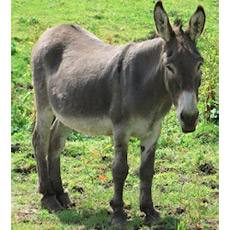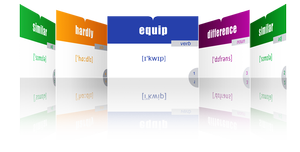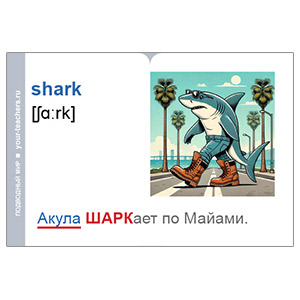Описане осла на английском языке
- Подробности
- 15494
На этой странице представлено краткое описание осла на английском языке. Двойной клик по слову откроет его перевод и озвучку. Ключевые слова можно закрепить в тренажёре в конце страницы. Работа со словами задействует моторную память и помогает лучше из запоминать. К каждому разделу добавлен аудиофайл в формате MP3 для более глубокого разбора и развития навыков аудирования.
ОСЕЛ

Vocabulary:
| № | Английский | Транскрипция | Русский |
|---|---|---|---|
| 1 | silly | [ˈsɪli] | глупый |
| 2 | stupid | [ˈstjuːpɪd] | тупой |
| 3 | stubborn | [ˈstʌbən] | упрямый |
| 4 | herbivorous | [hɜːˈbɪvərəs] | травоядный |
| 5 | funny | [ˈfʌni] | забавный |
| 6 | eared | [ɪəd] | ушастый |
| 7 | enduring | [ɪnˈdʒʊərɪŋ] | выносливый |
| 8 | even-toed | [ˌiːvən ˈtəʊd] | парнокопытный |
ПОТРЕНИРУЙТЕ СЛОВА
Краткое описание осла
Look at the picture. You can see a donkey standing in the grass. This donkey looks like a horse. Although, it is smaller than a horse. Its elongated ears are pricked. Its muzzle has oval nostrils at the end of its nose. Its forehead is broad. It has two eyes on either side of its face. It has a mane. It sticks up along its neck. It is grey with white spots on its belly and nose. It has a medium length tail. It has a furry brush at the end of its tail. It is standing on its four legs that have hooves. Donkeys are herbivores. They are not dangerous.
LISTEN TO THE TEXT
15 Интересных фактов об осле
The donkey or ass (Latin Equus asinus) is a domesticated member of the horse family Equidae. This donkey looks like a horse but its size is usually smaller. Its ears are elongated and pricked. Its muzzle is elongated too with two oval nostrils at the end of its nose. Its forehead is broad and the eyes are on either side of the face. It has a mane that sticks up along the base of the neck from skull to shoulders. It is grey with white spots on the belly and nose. Its tail is medium length with a furry brush at the end. It stands on four legs with hooves. Donkeys were domesticated earlier than horses and were used by prehistoric people to transport things. All domesticated donkeys belong to African donkeys; attempts to tame kulans have been unsuccessful. By breed, donkeys can grow 90–163 cm tall; the largest reach up to 163 cm and weigh 200–400 kg. The donkey differs from horses in that it tolerates the lack of food and water more easily. Donkeys feed on grassy and shrubby vegetation. Mixing donkeys and horses creates a mule and a hinny (a hybrid of a male horse stallion and an ass). A donkey’s life expectancy is 25–35 years; occasionally some live up to 45–47 years.
LISTEN TO THE TEXT








 Как правильно изучать английский язык по карточкам (статьи)
Как правильно изучать английский язык по карточкам (статьи)